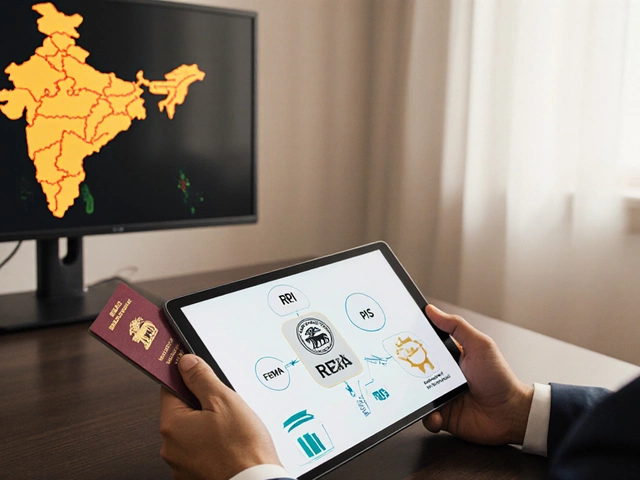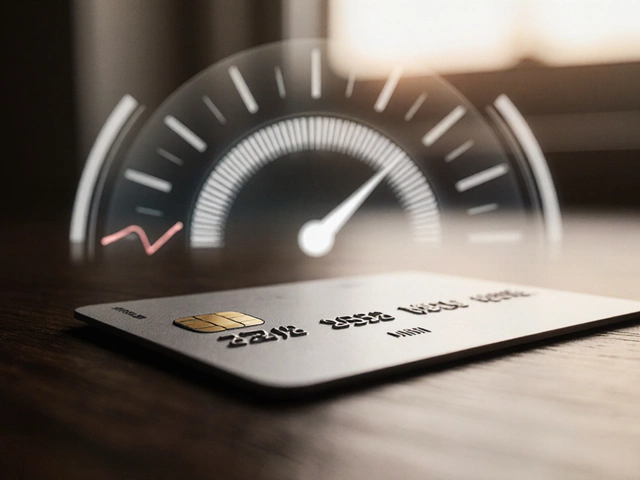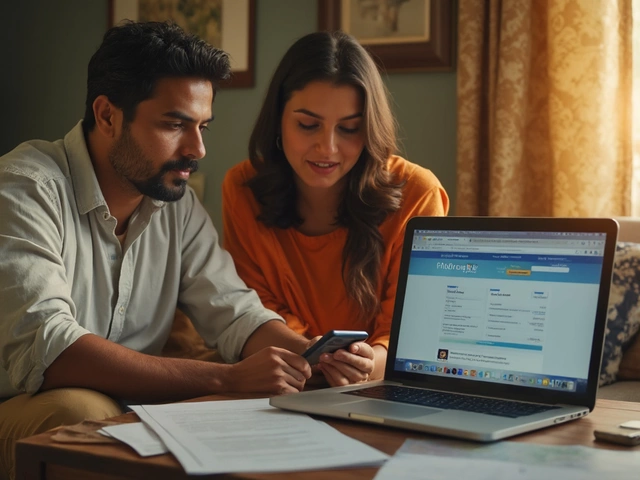
If the IRS flagged your tax return and asked you to verify your identity, you’re not alone—it’s more common than you’d think. The big question most people have is: once you’ve verified, how long until your refund actually shows up? In 2024, the answer isn’t always clear-cut. Refunds don’t show up instantly, and several things can affect the wait time.
The IRS usually says most folks get their refund within 3 weeks after successful identity verification. But sometimes it’s faster, sometimes it drags on a bit. A lot depends on how you verified (online vs. in-person), whether there were other errors on your return, and what time of year you responded.
Here’s what really happens at each step, what to look out for, and a few tips I wish someone had given me sooner. If you’re stressing about your money, stick around. I’ll break down what causes delays, how you can track your refund, and when it’s time to stop waiting and call for help.
- Why Identity Verification Happens
- What to Expect After Verifying
- Average Wait Time for Refunds
- Common Delays and How to Avoid Them
- How to Check Your Refund Status
- When to Contact the IRS for Help
Why Identity Verification Happens
The IRS isn’t just making you jump through hoops for fun. If they ask you to prove who you are, it’s usually because they spotted something fishy or inconsistent with your tax return. With identity theft and tax fraud on the rise—over 1.1 million suspicious tax returns were flagged in 2023 alone—the IRS has gotten really serious about stopping scammers before they snatch someone’s refund.
Sometimes, it’s as simple as a name or Social Security number not matching up with IRS records. Other times, the system spots odd patterns, like bank account changes, big jumps in income, or returns coming from new addresses. Even small typos or missing info can trigger the need for identity checks.
- If your tax return claims credits or deductions that seem out of the ordinary, expect a verification notice.
- Returns filed from locations that don’t match your usual address can trigger a red flag.
- Filing multiple returns under the same Social Security number is a big warning sign for the IRS.
The IRS mostly uses two forms for this: Letter 4883C and Letter 5071C. Letter 5071C is the one you see if you filed online or if something about your electronic return doesn’t match their records. Letter 4883C usually shows up if they want to confirm your identity by phone or mail.
Here’s a quick look at the kinds of issues that trigger identity checks:
| Reason | What the IRS Looks For |
|---|---|
| Name/SSN mismatch | Name and Social Security number don’t match IRS database |
| Unusual credits or deductions | Claims that seem out of the ordinary compared to last year |
| Multiple returns | More than one return filed with the same SSN |
| Direct deposit info change | New bank accounts for refund deposits |
| Address inconsistency | Return sent from a location that’s not your standard address |
Protecting taxpayers from fraud is the main goal. Even if you’ve done everything right, the process can be frustrating, but it’s basically the IRS’s way of making sure your tax refund gets to the right person.
What to Expect After Verifying
After you get through the identity check, you might think your tax refund is right around the corner. Most of the time, that’s true—but there’s a bit more to it. The IRS still needs to finish processing your return, so don’t expect the money to hit your account overnight.
The IRS says that refunds usually come within 21 days after you verify. That’s if there aren’t any hiccups—like missing paperwork or a return pulled for an extra review. If you verified online using ID.me or the IRS portal, things tend to move faster than if you mailed forms or visited an IRS office.
“After you verify your identity, most refunds are issued within three weeks, but delays can happen if additional review is required,” says the official IRS website.
Here’s what happens next, step by step:
- The IRS updates your account with your verification status (this usually happens in a day or two if you verified online, up to two weeks if you did it by mail).
- Your return goes back into the queue for normal processing.
- If everything checks out—no weird numbers or missing stuff—the refund gets approved.
- The IRS issues your refund by direct deposit or mail, depending on what you picked.
Heads up: 2024’s tax season has actually been slightly faster for online verifications. In February and March, the average wait after ID.me verification has hovered around 13 days for simple returns. Paper or in-person verifications stretched closer to three weeks—and sometimes longer for complex cases.
| Verification Method | Average Wait (2024) |
|---|---|
| Online (ID.me/IRS Portal) | 13 days |
| Mailed Documents | 18-21 days |
| In-Person | 20+ days |
If your IRS "Where’s My Refund?" status says “still being processed” a week after you verify, don’t freak out. The system takes a while to update. But, if it’s been more than 21 days and you’ve heard nothing, it’s totally fair to follow up—sometimes things really do get stuck for no clear reason.
Average Wait Time for Refunds
So, after you get through the identity check with the IRS, how long do you really have to wait for your tax refund to hit your account? For most people in 2024, it usually takes about 21 days or less after the IRS marks your identity as verified. That 3-week target isn’t a promise, but it’s the average—they actually say "within 21 days" once you’re cleared.
If you verified your identity online (using the IRS’s ID.me or their secure verification service) and didn’t have any other mistakes on your return, you might see the money in as quick as 14 days. But let’s be real—for some people, it does stretch a bit longer, especially out in the peak of tax season (like early March or just after April 15).
Paper verification and in-person visits take longer. If you had to mail in extra documents or waited for an appointment at a Taxpayer Assistance Center, you could be looking at 4 to 9 weeks total. Mailing anything to the IRS is always slower than doing it online.
Here’s a quick breakdown so you know what to expect after that ID check:
- Most refunds (after ID verification): 14–21 days if online, up to 9 weeks if mailed/in-person
- Peak processing times: Add at least a week during late March or after the regular tax deadline
- If you had errors or missing info: Refund can take longer, even up to 12 weeks (the IRS will usually alert you if there’s a problem)
Tracking your refund is a must—use the "Where’s My Refund?" tool or IRS2Go app so you’re not left guessing. You’ll see a clear update when your verification is complete and when your refund is approved for payment. If it’s been more than 21 days (and you did everything online), start looking closer at your return for mistakes or give the IRS a call.

Common Delays and How to Avoid Them
The IRS isn’t exactly known for being speedy, and a bunch of things can stretch out your refund wait time even after you've cleared the identity verification step. The first biggie? If you skip a detail or mess up your info—like a typo in your Social Security number or turning in the wrong documents—it can trigger another review. That means you’re back in line, waiting all over again.
Another huge slowdown happens when you try to verify your identity by mail instead of online or over the phone. Paper is slow, and humans still handle most of that process, which means mistakes sometimes slip in. If you went with snail mail, your tax refund could take weeks longer. It’s way faster to do it online using the IRS Identity and Tax Return Verification Service if you get the option.
Peak tax season is like rush hour at the DMV—everybody’s filing, and the IRS gets swamped. If you verify between late January and April, there’s just more traffic and processing can bog down. Another thing: if your return gets flagged for suspected fraud or errors even after you prove your identity, they’ll pull your file for extra review. That’s usually out of your hands, but it helps to double-check for mistakes before you file or reply.
- Always use the IRS online verification if possible—way quicker than mail.
- Make sure every detail matches what’s on your last tax return, especially addresses and Social Security numbers.
- Upload clear, readable photos if you’re sending IDs.
- Don’t wait to open or respond to IRS letters. The sooner you reply, the sooner the ball gets rolling.
- Check for updates at least once a week using the IRS Where’s My Refund tool.
Small mistakes snowball into big headaches later. Triple-check everything before you submit, and keep your IRS letters handy just in case you need to call for help.
How to Check Your Refund Status
Most people just want to know one thing: is my tax refund on the way, or is it stuck somewhere? The IRS has a simple tool called Where’s My Refund? that’s updated once every 24 hours (usually at night). You’ll need your Social Security number, your filing status, and the exact dollar amount of your expected refund. Skip the phone calls if you can—this website gives you way quicker answers.
After verifying your identity, the system usually updates in a week or two. You might see one of three common status messages:
- Return Received: Your tax return is in the system but not yet processed.
- Refund Approved: Your refund is about to be sent out—expect it within a week.
- Refund Sent: The money’s on the way, and you should check your bank or mailbox soon.
If you use the IRS2Go app, you’ll get the same info on your phone. For a lot of people, direct deposit refunds update faster on these tools compared to paper checks.
Wondering how long the wait has been in recent years? Here’s what the IRS posted for 2023 average wait times after identity verification:
| Verification Method | Average Refund Wait |
|---|---|
| Online/Phone | 2-3 weeks |
| In-Person | 3-6 weeks |
If the online tracker hasn’t changed for over 21 days after you verify, it’s time to do some digging. You can call the IRS refund hotline at 800-829-1954, but only do this if the online tracker isn’t helping because phone lines are often packed during tax time.
Tip: Always double-check that your personal info is correct when using the website or app. One typo can block you out for 24 hours. Also, some tax software companies—like TurboTax and H&R Block—let you track refunds from their dashboards, but the IRS is the most up-to-date.
When to Contact the IRS for Help
Sometimes, it feels like you’re stuck in refund limbo. If it’s been longer than three weeks since you completed the IRS identity verification process and you haven’t received your tax refund or any updates, it’s time to get proactive. The IRS says most identity-verified refunds process within 21 days, so anything more than that deserves a second look.
Here are the situations where it makes sense to reach out:
- It’s been over 21 days since your identity check and there’s no refund or status update.
- You get a message or letter from the IRS asking for more info or saying there’s an issue.
- The IRS “Where’s My Refund?” tool shows your return is still processing, with no change for weeks.
- You see an error message or you can’t get into your IRS online account.
When you call, have your Social Security number or taxpayer ID, your tax return details, and the notice you got from the IRS handy. They’re probably going to ask for this right away. You can reach the IRS at 1-800-829-1040, usually between 7AM and 7PM local time Monday to Friday. Calling early in the morning (especially on Wednesdays or Thursdays) tends to mean less time waiting on hold.
Statistically, the IRS got more than 20 million calls during refund season in 2024, and typical hold times were around 24 minutes—sometimes quicker, sometimes up to an hour if call volume spiked. Here’s a quick breakdown of what to expect, based on actual IRS figures:
| IRS Wait Time (2024) | Average Minutes |
|---|---|
| February–April (Peak Season) | 36 |
| May–June (Lower Volume) | 18 |
If you’ve tried calling and still can’t get answers after several weeks, you can reach out to the Taxpayer Advocate Service. They step in when problems won’t budge through the normal IRS line. Don’t forget, being polite and having all your paperwork ready can make the call go a lot smoother.








Write a comment